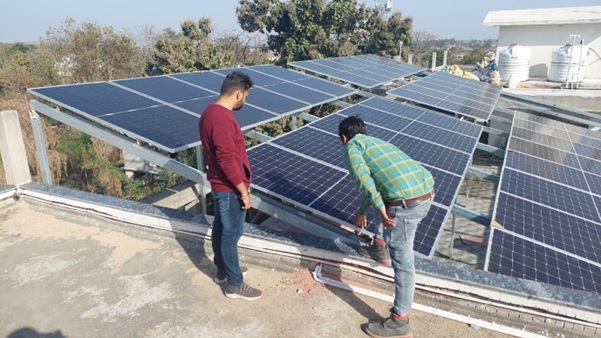
The initial investment in solar energy for your home pays for itself very quickly – within a few years at most – and has several benefits, including being more environmentally friendly than the traditional methods, reducing your heating bills significantly over time, and saving you money. So that you know exactly what you’re getting into, we’ve compiled a detailed guide on how to choose the best solar panel for home. The most common location for photovoltaic panels is a home’s roof. It gets a little trickier when you put them in an apartment, though.
How does each part of a solar system function, and what exactly is a photovoltaic system made up of?
What we need to know before making an investment in alternative energy generation technologies is laid out by LoomSolar. So, photovoltaic systems convert sunlight into power via photovoltaic panels, inverters, and solar controllers.
LoomSolar has started selling its new module series Shark BiFacial Solar Panel on the Indian market. The space required for this 440-530 Watts module is 24 sq. feet. The manufacturer gives a product guarantee of 10 years and a performance guarantee of 25 years on the Shark series.
There are three main types of photovoltaic setups: those that are connected to the grid, those that are not, and those that are a mix of the two.
To put it simply, the photovoltaic system that is connected to the mains
The photovoltaic system that is connected to the grid is called a “on-grid” system. That is to say, most of the power generated by the panels throughout the day is consumed internally, but any excess is fed back into the grid and distributed to other users. In an on-grid arrangement, the public grid makes up the gap if the photovoltaic panels are unable to collect enough solar power.
The fact that you just have to pay for the difference between your energy production and consumption at the end of the month is a huge perk. To top it all off, if your generation is higher than your usage, you may actually earn money for the excess power you feed into the grid. The negative is that you will need to sign a contract with a supplier because you will still be dependent on the public energy infrastructure, albeit to a smaller amount.
The standalone solar power setup
The accumulators in an off-grid photovoltaic system store the surplus energy for use during times of low or no solar energy output, such as on cloudy days or at night, ensuring the home’s energy independence. The benefit of producing your own electricity is that you are not reliant on the public grid and need not get into a contract with a supplier. The downside is that if the photovoltaic system is not planned and sized properly, you can run out of power. Inverter battery price is listed on the LoomSolar website if you’re interested in purchasing a solar battery.
Combined solar and photovoltaic energy systems
In order to get the best results, you should install a hybrid photovoltaic system, which combines the features of the other two types. The inverter has a lot of different options to choose from. This means that some of the conceivable variations are:
- energy used, mostly from the solar panels but with a little help from the grid;
- electricity drawn from photovoltaic panels, with backup power supplied by batteries;
- use of energy generated by solar panels, with the batteries being charged overnight via the power grid and then used during the day.